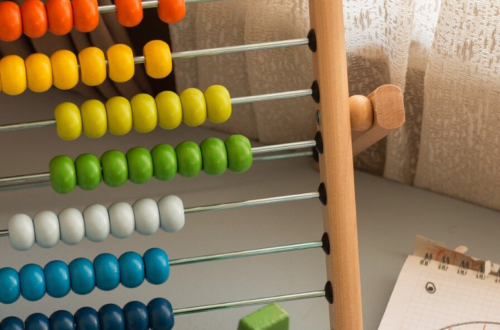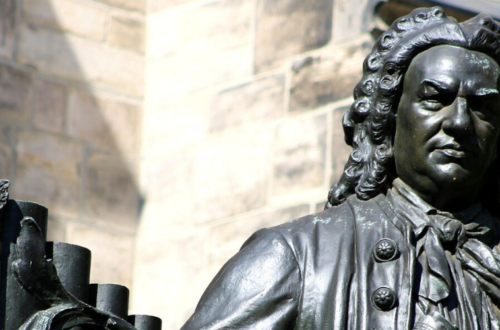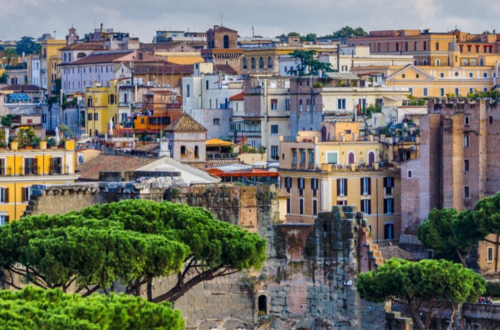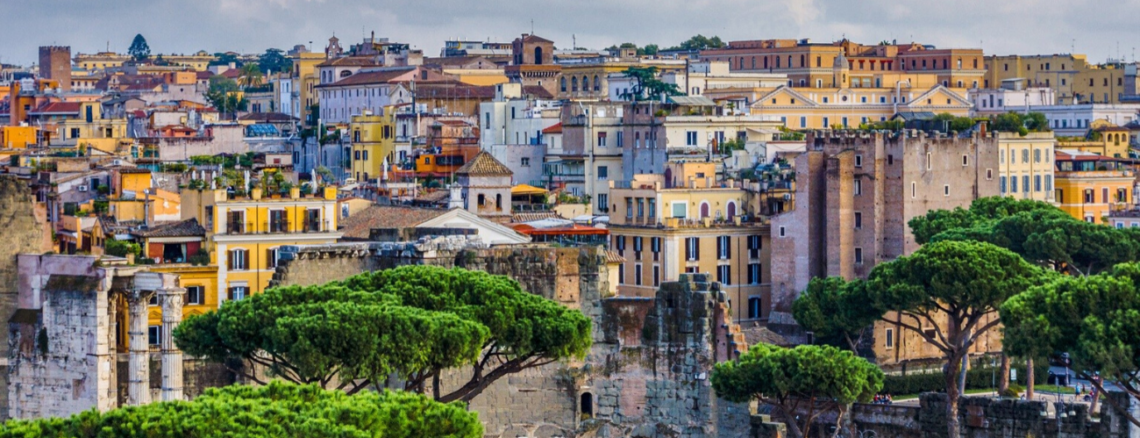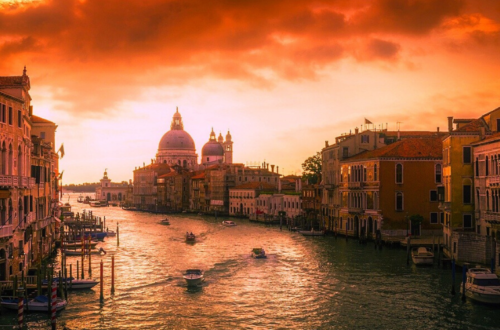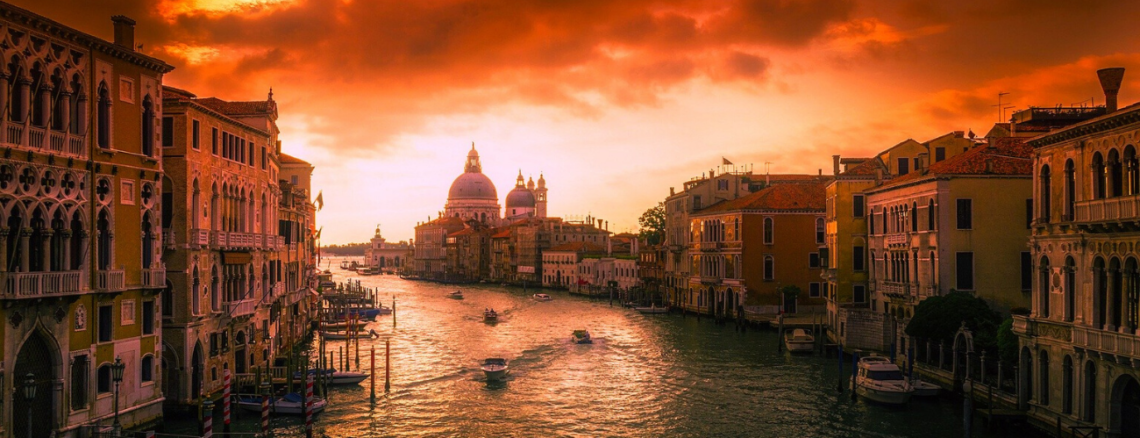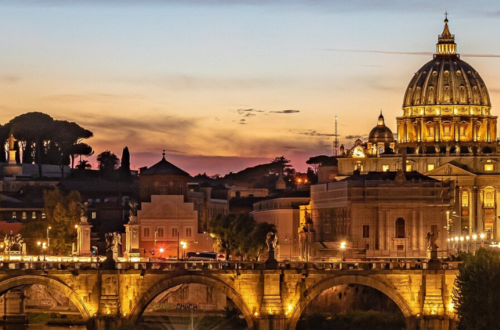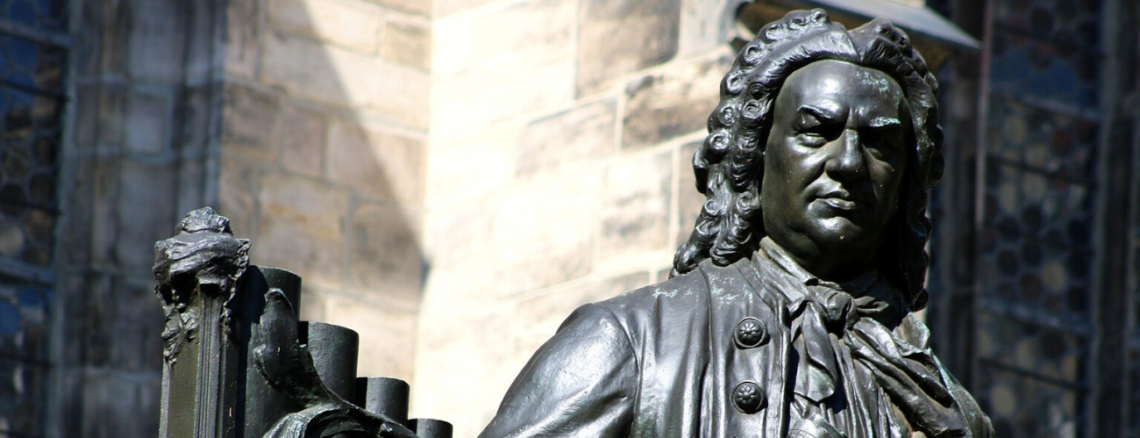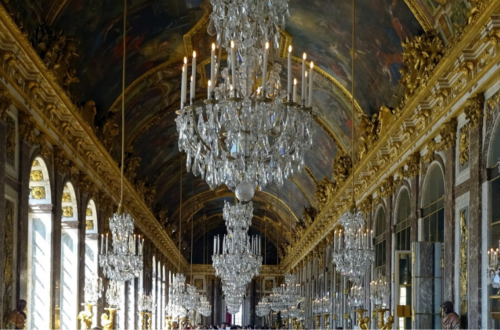-
Being Historical with Handel: Music History for Kids

When exploring music history with your kids, George Frideric Handel (1685–1759) is a great person to start with. He was a famous composer of classical music and lived during the Baroque period. (What’s the “Baroque period”? Find out here.) While he lived most of his life in England and is considered an “English” composer, he was actually born in Germany and his name is sometimes spelled “Georg Friedrich Händel.”
During the Baroque period of music history, the instruments that played classical music were slightly different from today. In Handel’s time, most of the same instruments existed, but they were made differently from how they are now. For example, a lot of woodwind and brass instruments had few or no keys. String instruments also had gut strings (instead of metal) and were played with a differently shaped bow.
If you want to learn more about the instruments that played Baroque music check out our Guide to Baroque Instruments. Today we can call Baroque instruments “period instruments” because they’re from the Baroque period. (We also call modern replicas of Baroque instruments “period instruments.”)
The piece by Handel my that son, Little M, and I want to share with you today is part of the famous piece “Water Music.” Before we dive into the music, though, here’s a short Handel biography to help you and your kids further your knowledge of music history.
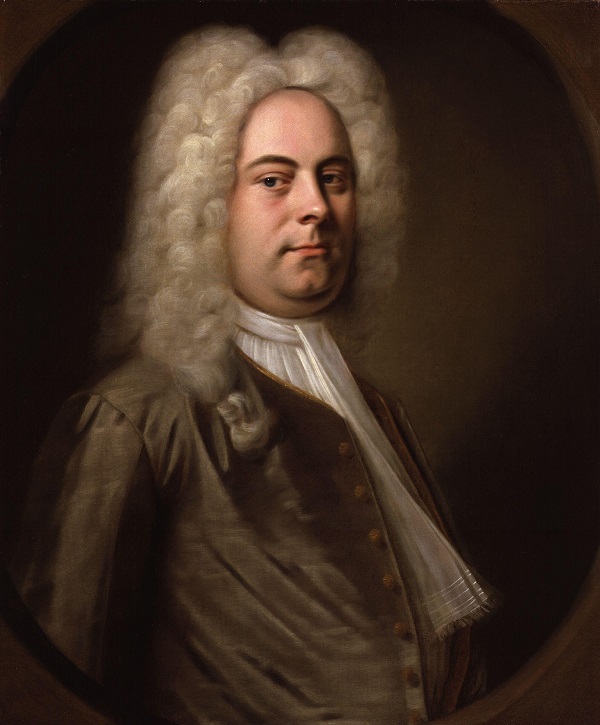
Handel’s Bio
George Frideric Handel (1685–1759) was born in the city of Halle, in what is now the country of Germany. He studied music and started composing while he was still a child there. He played several instruments, including the harpsichord, organ, and violin. In about 1706 he moved to Italy, but only after working in a few different cities in Germany.
While in Italy, Handel wrote quite a bit of vocal music, including operas and oratorios. His popularity continued to grow, and in 1712 he moved to London.
Handel spent the rest of his life living and working in London–more than 40 years! He held numerous high-ranking positions as a musician there and was well known for his music. Even though Handel is probably best known for his vocal music, he also wrote a lot of great instrumental music.
During his lifetime, Handel wrote 42 operas, 25 oratorios, and a great number of other works for voices and/or instruments. (An oratorio is similar to an opera, but has a sacred subject and doesn’t have costumes or sets.) His best-known work is his oratorio Messiah, which contains the “Hallelujah Chorus,” his most famous piece.
Handel was famous and well respected during his lifetime, which is not always true for composers famous now. He was buried in Westminister Abbey in London and more than 3,000 people attended his funeral.
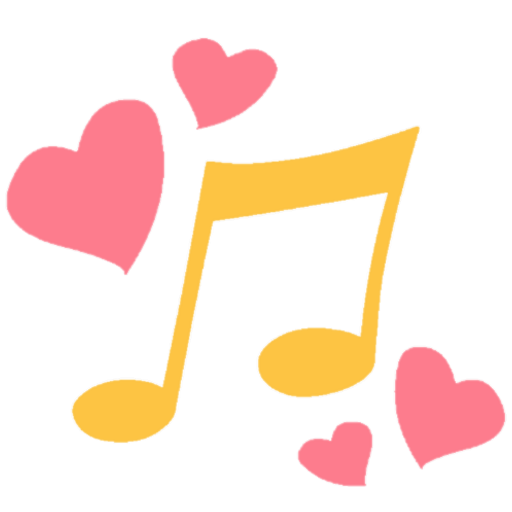
The Music
The music that my one-year-old, Little M, and I want to share with you today is part of Handel’s Water Music. Water Music is for orchestra and is made up of a bunch of separate movements. (A movement is a short-ish piece of music that joins together with other movements to form a larger work.)
Handel wrote the piece because King George I of England wanted to have a concert on the River Thames. It was first performed on a barge in the middle of the river! The king and his guests were actually on another barge floating in the river. The name of the piece comes from the manuscript, however, and not from the first performance venue.
This performance is by the Festspiel Orchester Göttingen, which is the orchestra that gathers for the Göttingen International Handel Festival. You can find out more about the festival on their website and listen to more music on their YouTube channel.
-
Being Raucous with Royer, or Baroque Music for Kids at Home

I can’t help myself. Whenever I read an article about how calm and soothing classical music is, I think of pieces like Vertigo by Joseph-Nicolas-Pancrace Royer (c1705–1755), which is anything but. If you want to share some exciting Baroque music with your kids while you’re stuck at home, check out this piece by Royer!
Vertigo is the kind of crazy cool music that was happening in France between the 1730s and 1750s, at the end of the Baroque period (roughly 1600–1750). It is fire, it is fury. These are emotions that kids should be exposed to in music, too.
This music is anything but relaxing, but that’s what makes it so great. I think its intensity is part of what draws my one-year-old son, Little M, to it. Hopefully your children will be drawn to it, as well, and will find it as interesting as Little M does.
Before we get to the music, here’s a short bio about Royer to get you up to speed.

Royer’s Bio
Joseph-Nicolas-Pancrace Royer (c1705–1755) was a French composer during the late Baroque period of classical music. In addition to being a composer, he also played the harpsichord and organ and was known for being a great musician. He worked at various musical locations in Paris, as well as at the French court at Versailles.
Royer is best remembered (when he’s remembered at all) for his harpsichord music. But he actually wrote a lot of operas, which are like plays but with singing instead of speaking. He was a very well-known musician during his lifetime even though he has mostly been forgotten today.

The Music
As promised, the selection my son, Little M, and I wish to share with you today is Royer’s Vertigo. This music is great to share with your kids at home because it is not only interesting to listen to but also fascinating to watch. My son is very intrigued by the harpsichord and its unique sound, so he finds pieces like this fascinating.
While we’re on the topic, a few notes about the harpsichord, which is the only instrument in today’s video. Despite its appearance, the harpsichord is not very much like the piano. The technique used to play it and make it sound its best is completely different from piano technique. The unique sound of the harpsichord is created by little pieces of bird quill–like the part of a bird feather people used to write with!–plucked the strings when the keys are played.
If you want to learn more about the harpsichord and how it’s different from the modern piano, check out our Guide to Baroque Instruments.
This music was intended to shock and amaze and I think it does that as much for the player as it does for the audience. It’s full of devilish surprises that challenge the harpsichordist’s technique and the listener’s ear. It is virtuosic harpsichord music.
The fabulous harpsichordist in this video is Jean Rondeau. Go check out his website or his YouTube channel! A bunch more videos of his playing can be found on the Warner Classics YouTube channel.
If you want to check out the whole CD, you can find it on Amazon by clicking the image below. (Disclaimer: We may receive compensation [at no extra cost to you!] when you click on the links to this CD.)
-
Reveling in Rossi, or Classical Music Songs for Kids

My one-year-old, Little M, loves vocal music! He is always very interested in watching videos of people singing.
Songs–even classical music songs–are great for kids because they introduce new words and sounds while reinforcing familiar ones. Songs in other languages, such as our selection for today (which is in Italian), are also great. They introduce the words and sounds of other languages and help babies and kids learn more about the world around them.
Today’s selection is by the classical music composer Luigi Rossi (1597?–1653). You probably don’t know who Rossi is since he’s no longer that famous, but he was a big deal in his day. He wrote two Baroque operas and a ton of other great vocal music to prove it!
One of Rossi’s operas, Orfeo, was based on the ancient Greek myth of Orpheus and Eurydice. It was premiered in Paris in 1647 and became an important turning point in the French acceptance of Italian music!
To get you up to speed on Rossi before we dive into his music, here’s a short bio.

Orphée ramenant Eurydice des enfers (1861) by Jean-Baptiste Camille Corot Luigi Rossi’s Bio
Born near the end of the 16th century, Luigi Rossi was an Italian Baroque composer who loved to write music for singers. Almost all his works include voices and it is for these pieces that he is remembered today.
He lived in Rome by the 1620s and worked for various wealthy patrons there before landing a position as a church organist. His music became popular in France in the 1640s and he was invited to write an opera, Orfeo, to be premiered in Paris. After a few more trips to Paris, he returned to Rome for good, by that time lauded as one of the very best composers in Italy.
After his death in 1653 he was remembered as an amazing composer and virtuoso for a least another half-century before falling into obscurity. His music was “rediscovered” (thankfully!) in the 20th century.

The Music
My one-year-old son, Little M, helps me pick out music for this blog–only pieces he’s interested in get posted! And so the selection he and I would like to share with you today is Luigi Rossi’s “Dopo lungo penare.”
This is a canzonetta–or a short, lighthearted vocal piece (i.e. song)–in which the singer is having an argument with “Love.” Their argument is about whether or not he will again fall into the clutches and torments of love, or if he’ll escape and be happy. (This is admittedly a rather dark take on love by someone who had unfortunately been hurt before.)
The singer here is a fabulous countertenor. A countertenor is a male singer who sings in the high vocal range normally associated with female singers.
It’s a very playful piece that makes you want to move around to the music!
If you want to know more about any of the instruments you see, check out our Guide to Baroque Instruments. The instruments in this video are called “period instruments” because they were made at the same time period (i.e. hundreds of years ago!) as the music being played, or they are exact copies of instruments from that time period.
Little M and I hope you enjoy this song! Let us know what you think by leaving a comment below!
This performance is by countertenor Jakub Józef Orliński and the ensemble L’Arpeggiata. Go check them out!
-
Vivaldi and Violins, or Baroque Music for Babies

In today’s exploration of Baroque music that’s great for babies and children, my son, Little M, and I would like to share a piece with you by Antonio Vivaldi (1678–1741). You might already know about Vivaldi and his most famous work, a set of violin concertos called “The Four Seasons,” or Le quattro stagioni.
Vivaldi wrote more than 500 hundred concertos–pieces for a solo instrument, or group of soloists, and orchestra–and nearly half of those are for violin. But that’s not all that he’s known for. Here’s a short Vivaldi bio to give you some more info.
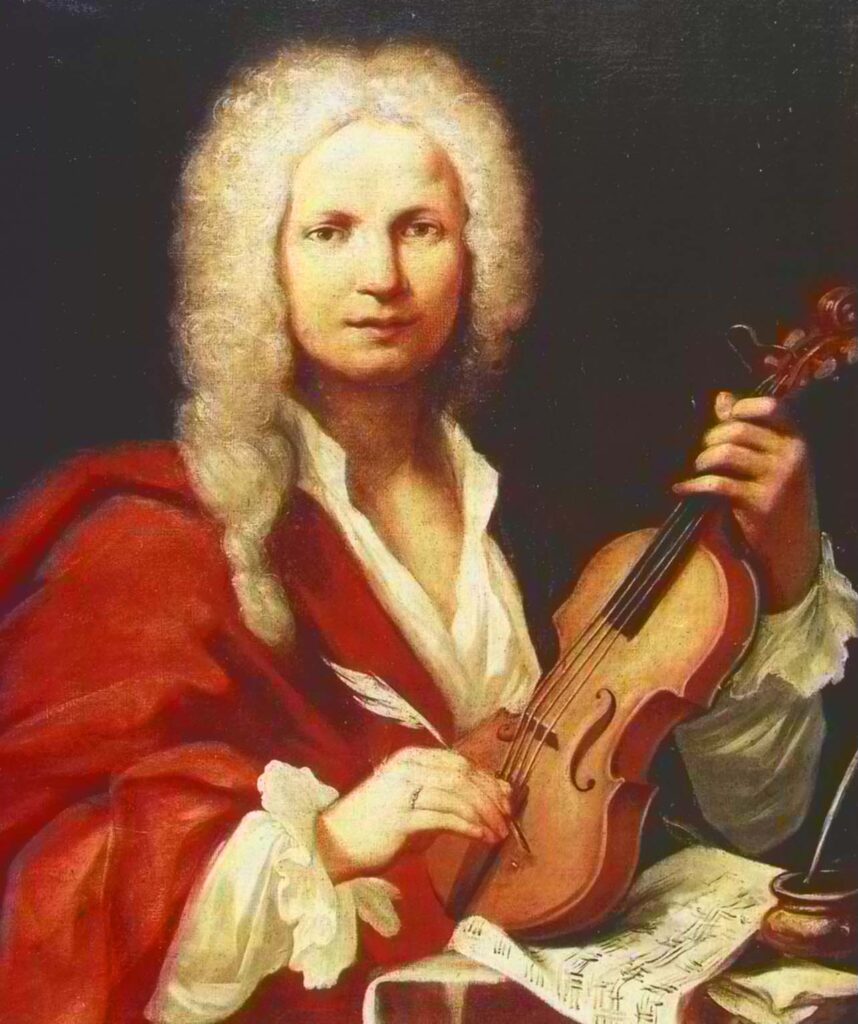
Vivaldi’s Bio
Vivaldi was known as “The Red Preist” because he had red hair and was. . . you guessed it. . . a Catholic priest. He was an Italian composer, born in Venice, Italy, in 1678, and he spent most of his life working at an orphanage there: the Ospedale della Pietà.
At the Ospedale he was in charge of an all-female musical ensemble, which consisted of an orchestra and choir. His ensemble and the ensembles of the other orphanages in Venice were considered to be very good, so good, in fact, that travelers from all over Europe came to hear them.
Vivaldi wrote most of his music for this ensemble, including more than 60 vocal works such as his Gloria in addition to his 500+ concertos. But he also wrote nearly 50 operas and some other works for musicians outside of the Ospedale.
After his death in 1741, his works were mostly forgotten until they were “rediscovered” in the 1920s and 30s and started to be programmed again on concerts.

The Music
The piece we want to share with you is from Vivaldi’s L’estro armonico (1711), which is an important published collection of concertos for one, two, and four violins with string orchestra. This piece is the third movement of the eighth concerto in that collection.
A movement is a [usually] short piece that is grouped together with other pieces to form a larger, complete piece.
It’s fast and furious, but also has tender moments that show the expressivity of the violins. Baroque music with these qualities is good for babies and children because it can hold their attention while also furthering their emotional development.
If you want to know more about any of the instruments you’re seeing, check out our Guide to Baroque Instruments. The instruments in this video are called “period instruments” because they were made at the same time period (i.e. hundreds of years ago!) as the music being played, or they are exact copies of instruments from that time period.
We hope you enjoy the music! Let us know what you think by leaving a comment below!
This performance is by the Irish Baroque Orchestra. Go check them out on their website or their YouTube channel!
-
Beginning with Bach, or Bach for Babies

There’s no better place to begin learning about Baroque music than with Johann Sebastian Bach (1685–1750)–he’s a famous classical music composer who is great for babies, children, and pretty much everyone else! Even though my one-year-old son, Little M, is just a baby, he loves Bach! And Bach is such a big deal that you’ve probably already heard of him, even if you’ve never listened to classical music before.
Spoiler Alert: You’ve actually already heard a lot of classical music in your life, even if you don’t know it! It’s in commercials and movies, in shopping malls and sometimes even elevators. You’ve almost definitely heard a lot more classical music than you think you have!
But who was Bach? And how did he become so famous? Here’s a short Bach bio to fill you in.
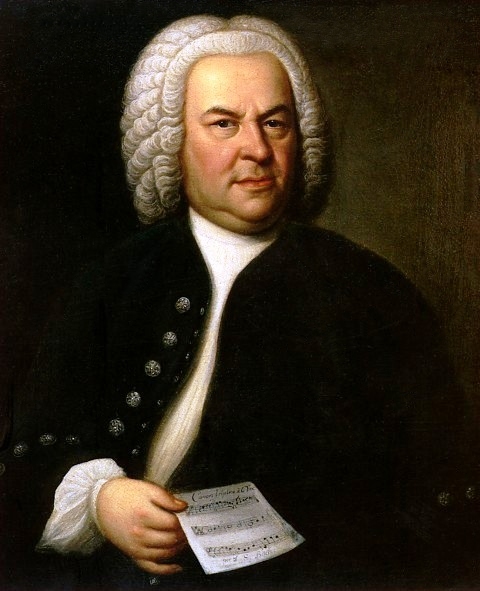
Bach’s Bio
J.S. Bach was born in Eisenach, Germany, in 1685. He started studying music at a very young age and even though both of his parents died by the time he was 10 years old, one of his brothers took care of him and helped him continue studying music.
As Bach grew up, he moved around to a few different cities in Germany, working as a musician everywhere he went. In 1723 he ended up in Leipzig, working as the music director for several churches there and teaching in the St. Thomas boys’ school. The move to Leipzig was the last one he made: he lived and worked there until his death in 1750.
Bach wrote more than 1,000 pieces that still survive today (and probably many more that no longer exist). He wrote both instrumental music–or music for instruments without voices–and vocal music–or music that includes singing.
Though he wasn’t super well-known during his lifetime, in the early 1800s–nearly 100 years later!–another composer, Felix Mendelssohn (1809–1847) thought his music was pretty amazing. Mendelssohn wanted more people to know about Bach’s music, so he put on a big Bach concert and that was the beginning of Bach’s fame. After that everyone saw just how great Bach’s music was and the rest is history.

The Music
So the piece of music my one-year-old son, Little M, and I want to share with you today is the first movement of one of Bach’s cantatas, “Wir danken dir…” (BWV 29).
A movement is a short(ish) piece that is grouped with other movements to form a larger musical piece. A cantata, in this context, is a piece of music for voices and instruments.
Even though this is a cantata (so it has singers), the first movement is just instruments, so you don’t need to worry about understanding any text.
This movement is fun and flashy and really enjoyable to watch as well as listen to! This is one of the reasons that Bach is great for babies–his music is often good at capturing their attention, especially with great performance videos!
If you want to know more about any of the instruments you see in the video, check out our Guide to Baroque Instruments. The instruments in this video are called “period instruments” because they were made in the same time period (i.e. hundreds of years ago!) as the music being played, or they are exact copies of instruments from that time period.
We hope you enjoy the music! The first movement ends at about 3:50, so you can stop the video there or keep listening if you want to hear more. Let us know what you think by leaving us a comment below!
This performance is by the Netherlands Bach Society. Go check them out on their website or their YouTube channel!



